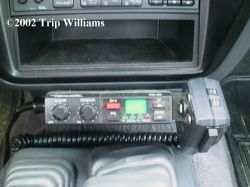
*Bring It In*

Alone, Isolated, scared, ignorant... this is no way to end up during a disaster. Ignorance kills. Fortunately, ignorance is 100% curable with knowledge. During a disaster, news and basic local communications is important, it can make the difference between life and death.
Back during the 1970's, the world went though a Citizen's Band (CB) craze due to several popular movies of the time. Almost every car on the road had a CB mounted inside and many homes had expensive setups installed. True, most of the mobile CB's were used mainly for "Smokey Reports", but they also saved many lives and made vehicle problems much less scary since help could be found immediately on Channel 9 (REACT) or 19 (The Truckers channel).
Actually, this CB craze ushered in the wide spread use of cell phones since people of that day got used to having communications at their finger tips. Almost everyone today has a cell phone, and that's a good thing, but during a disaster land lines and cell phones are usually the first thing to go out (echo's of the cowardly 9-11 terrorist attack is the most recent proof of this).
If a cell phone tower is down, the cell phone doesn't work. CB radios are immune from this since they don't rely on a repeater to work. True, the range of a CB radio is limited, but there is almost ALWAYS someone (or many someone's) close enough to talk to. The CB craze of the 70's may be over, but CB's are still in use by millions of people world wide.
Many of the 1970's models of CB radios are still out there working. They are inexpensive and readily available at flea markets and yard sales. Many people still have brands like "Midland", "Cobra", "GE", etc mounted in their cars for use on the road.
Few people have working CB stations in their home any more, but many people have an old Mobile unit stashed away in a closet or storage building. These should be incorporated into your survival plans.
While a Mobile CB mounted in your vehicle would probably do more harm than good during something like an NBC attack, that same mobile CB inside your home would do a world of good! You DO NOT want to leave your safe room or shelter during an attack to go wandering over to your vehicle for news or to call for help... You want to be able to make that call from inside your shelter or safe room... we're gonna look at doing just that!
Bringing That Mobile CB Inside
Converting a mobile CB into a base station is not really that hard. All it takes is a 12 volt power supply of some sort, Some Wire, some coax cable, and an antenna. Let's walk through the process...
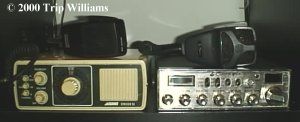
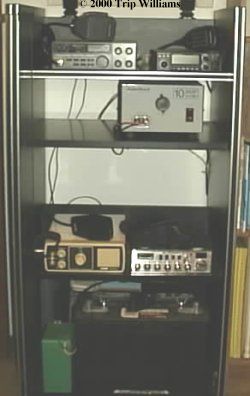
Power Supplies
As I said above, a 12 volt power source is needed to power your Mobile CB. In your vehicle, the battery is used... inside your shelter you can use your Alternate Energy battery bank, or you can use a commercial 12 Volt Power supply if you have a means to produce house current such as a generator or inverter. If you decide to use a 12 volt deep cycle Marine battery, or a car battery, BE SURE that the battery IS NOT inside your safe room! Batteries give off gases that are poisonous and explosive!!!
Power supplies are readily available at places like Radio Shack, Ham fests, etc. A "Legal" CB radio can transmit using 4 watts... from a 12 volt source that comes out to about a third of an amp used. I'd recommend that you get a power supply that has at least 2.5 amps available to it. Caution is needed here also!!!! Many of the CB's on the used market have been illegally converted to have a higher wattage output so that they "Talk farther". If you get one that's been modified in this way, it can easily pull 1 to 3 amps! If you're using a car battery, this is not a problem since they can almost always supply over 100 amps, but if you have a 2.5 amp plug in power supply, it can pop the circuit breakers on it, or damage the CB itself.
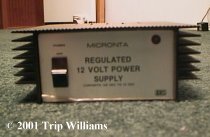
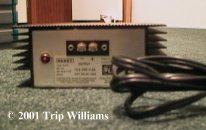
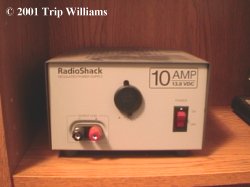
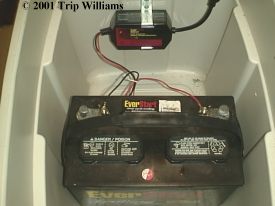
Wire
You'll need some wire to run from your CB's power connection to your power source... These two wires are normally Red and Black with a fuse in-line on at least one of the wires. Simply hook the negative wire (Usually black) from the negative connection on your radio to the negative terminal of your power source. Then hook the positive wire (Usually red) to the positive terminal on the radio and on the power source. Turn on the power supply and the radio switch, if the radio comes on, you've done it correctly.. if it doesn't, something's wrong... if you smell smoke, well, that's bad to say the least ;)
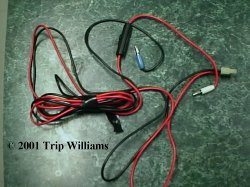
Coax Cable
Coax cable is the cable that connects the CB to the antenna.. it's a special type of cable that has an insulated inside core wire surrounded by a mesh of ground wire. There are several layers of insulation in this type of coax cable that are important. You can buy Coax cable already made up from Radio Shack for your alternate shelter comms and I suggest this method since making your own cables involves soldering PL-259 plugs to the cable itself and is best left to those with some experience in doing so. Radio Shack has preassembled cables in most lengths you'd need.
But don't overlook that stuff in your storage building. When folks began stripping CB's out of their vehicles in the 1980's, they usually pulled the coax cable and antenna off the vehicle and put it with the CB radio in storage. If you plan to have your antenna near your shelter you can usually make the coax cable from the original vehicle setup work just fine. If you have this cable already, yer ahead of the game!
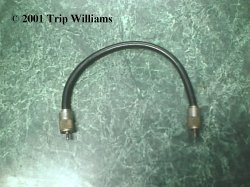
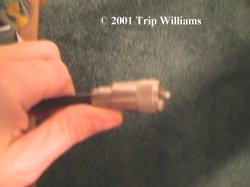
Antennas
Again, you'll probably find a mobile antenna stored with the CB in the shed. This will probably be one of three kinds of mobile antennas... a whip antenna (probably best), a gutter mount antenna, or a magnetic mount antenna. All of these can be used with our expedient Comms setup.
I say a whip antenna is probably best for several reasons. There is no real standing wave associated with a whip antenna so there's no reason to fool with a Standing Wave meter. Whip antennas are longer (slightly more range) and they're easier to work with. Mounting a whip antenna is simple as long as all the parts are there and it's assembled (and it'll most likely already be assembled if it was in storage, probably with the coax already attached). At this point it's simply a matter of attaching the Antenna to your roof or a pole of some sort. CAUTION! Avoid power lines when you are handling an antenna, even getting the antenna CLOSE to a power line can be lethal!!!!
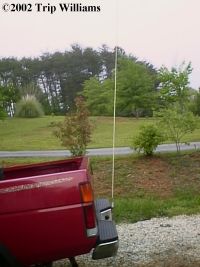
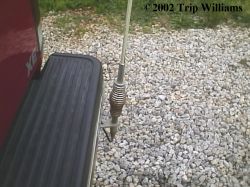
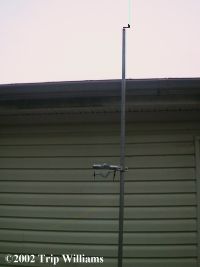
If you have a gutter mount, or magnetic mount antenna in storage, the process is about the same, simply attach it to your roof or a pole, the standing wave on these is probably already set, but get a friend knowledgeable in setting standing waves to come over and assist you!
A bit About Standing Waves
Without getting into antenna and wave length theory, your antenna must be EXACTLY a certain length for each "band" (a band is a group of frequencies) you intend to talk on. Whip antennas are pre-cut to this length, but gutter mounted or magnetic mounted antennas have a set screw that allows you to adjust the length of the antenna. If you don't have a proper standing wave, not only will your range be affected, but you risk damaging your radio.
When you use an antenna that is not properly adjusted, some of the transmit power is reflected back into the radio... this can cause special transistor-like parts inside the radio (commonly called "Finals") to be damaged. If this happens, you now have a "Receive only unit". Again, if you are unsure, grab a friend that knows a little about this stuff and have him do it for you.
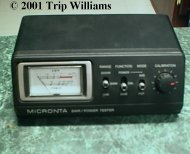
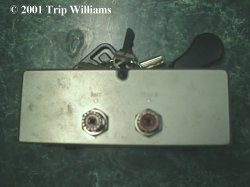
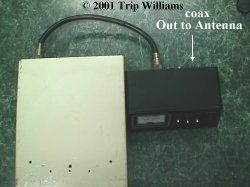
Accessories
CB's Radios are AM (Amplitude Modulation) radios.. this basically means that the louder you talk, the farther your voice will be transmitted. To aid in this (Since screaming into a microphone can be tiresome ;) many people get a "Power mic". This is a battery enhanced microphone that amplifies your voice many times before the radio transmits it. You can get a few extra miles of range sometimes by using a power mic.
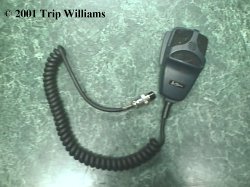
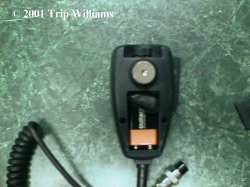
Unless you know something about electronics, you'll have to have a professional Wire this new mic into your radio... DO NOT simply plug it in and try to use it unless is specifically says it is already set up for your radio! The plug might fit, but the wiring inside is probably different than what your radio needs.
A simpler way
A simpler method of using a vehicle mounted CB radio inside your shelter is to just park your car very near the shelter, pull the CB Radio out of the car and hook it up inside the shelter to your battery bank or Power supply... then simply run the pre-existing coax cable from your car's CB antenna into the shelter and attach it to the radio.
Having your vehicle near your shelter also provides you with some additional shielding from Radiation, EMP, and allows you to use the car as a generator in an emergency by hooking an inverter to your car's battery. Cranking the car every hour or so and letting it run about 10-15 minutes while there is no immediate danger will keep the battery charged.
Tips
There is an old saying that's very true when it comes to radios.. "An expensive antenna on a cheap radio will talk a lot further than an expensive radio using a cheap antenna".
Words of wisdom. If you're planning to spend any money on your emergency comms set up, put the money into a decent antenna.
This article simply covers the basics of hooking up an emergency, field expedient radio to your shelter, assuming that you have a little advanced warning of an event. If you want a more permanent setup, get a good antenna, poles, thicker coax cable, etc, and install it. But if you need something fast and dirty, the above procedures will work.
REMEMBER, You may want to listen to traffic on the radio and not talk if possible. If things are so bad that you're in your shelter, the last thing you want is for a lot of people to know where you are. When you press your microphone, people with the right equipment (and most all ham operators have "the right equipment") can pin point your location to within a few feet! Don't transmit unless you absolutely HAVE too! Additionally, listening to your radio doesn't require much power at all, but transmitting takes much power from your Batteries. This is important to know if your shelter is running off a bank of batteries.
If you have any doubts about the way your antenna is hooked up, DO NOT TRANSMIT! You can listen to others talk without damaging your radio, but if your antenna is messed up, you'll ruin your transmit ability.
If you have portable TV sets, AM/FM radios, shortwave radios, scanners, etc, in your shelter, you can usually disconnect your CB antenna cable and run a wire from the other unit's antenna to your CB antenna cable and get better reception on those devices (Since your CB antenna is outside the shelter and presumably up higher in the air). Try touching your jumper wire from the other unit's antenna to the center connection of your coax's plug... then touch it to the case of the plug and see if your reception improves on your TV, etc,... If so, GREAT!
NEVER try to transmit on a CB antenna with Ham equipment, walkie talkies, FRS radio's, etc... it can damage them!
Again, NEVER get an antenna near power lines, Or where it could fall into a line during a storm! Even getting an antenna close to a power line can kill you!
During an emergency, the ability to communicate can be crucial. News, weather, the ability to call for help, can make shelter life MUCH more bearable. Learn to use your radios, and learn to set them up quickly if they are not permanently attached to your shelter. During a disaster, you'll be glad you did.
Warlord
All materials at this site not otherwise credited are Copyright © 1996 - 2002 Trip Williams. All rights reserved. May be reproduced for personal use only. Use of any material contained herein is subject to stated terms or written permission.